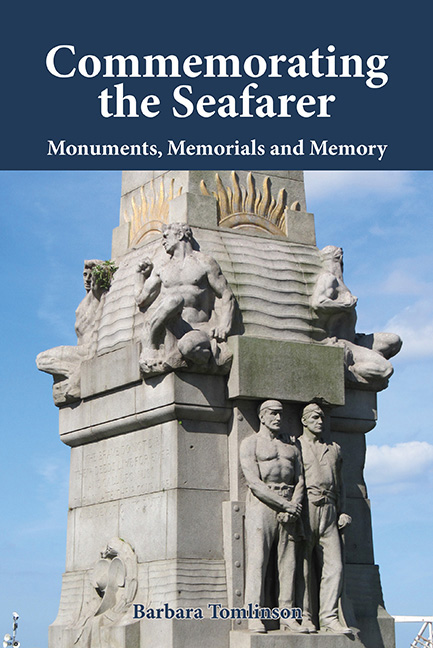Book contents
- Frontmatter
- Dedication
- Contents
- Illustrations
- Preface
- Acknowledgements
- Introduction
- 1 Shifting Loyalties: Naval Memorials, 1628–783
- 2 The Age of Heroes: Naval Memorials, 1783–815
- 3 Pax Britannica: Naval Memorials, 1815–914
- 4 Stormy Weather: Conflict and Sacrifice in the Twentieth Century
- 5 Commerce and Philanthropy: Mercantile Commemoration
- 6 Lost at Sea: Maritime Accidents
- 7 Maritime Explorers: Drake to Shackleton
- 8 Inshore: Fishermen, Lifesavers and Leisure
- Conclusion
- Bibliography
- Index
3 - Pax Britannica: Naval Memorials, 1815–914
Published online by Cambridge University Press: 08 May 2021
- Frontmatter
- Dedication
- Contents
- Illustrations
- Preface
- Acknowledgements
- Introduction
- 1 Shifting Loyalties: Naval Memorials, 1628–783
- 2 The Age of Heroes: Naval Memorials, 1783–815
- 3 Pax Britannica: Naval Memorials, 1815–914
- 4 Stormy Weather: Conflict and Sacrifice in the Twentieth Century
- 5 Commerce and Philanthropy: Mercantile Commemoration
- 6 Lost at Sea: Maritime Accidents
- 7 Maritime Explorers: Drake to Shackleton
- 8 Inshore: Fishermen, Lifesavers and Leisure
- Conclusion
- Bibliography
- Index
Summary
During the years following the defeat of Napoleon, the Royal Navy was a victim of its own success. In peacetime, there were fewer ships in commission and less opportunity for gaining prize money. The military careers of many younger officers were virtually over. Unable to live on the reduced pay provided when they were not actively employed by the Navy, they sought other opportunities in civilian life. More senior officers, if better-off on half-pay, could similarly only look forward to long periods of unemployment. While some men gained distinction in expanding areas such as surveying and Arctic exploration, the Navy had largely ceased to be a route to social advancement through fighting prowess.
On the beach
Naval seamen could, in theory, return to the merchant service, although many seem to have worked as farm labourers or in more urban trades. If significantly disabled, chronically infirm, elderly and also – or thereby – destitute, some veterans became Greenwich Hospital in-pensioners (resident at the Hospital) or out-pensioners drawing a charitable income from it but living elsewhere. Memorials to any of these individuals are rare.
The original Hospital burial ground was on Maze Hill, in the north-east corner of Greenwich Park, but a new site was opened adjacent to the present Romney Road in 1749 including a new vault for officers. Pensioners were buried in sixteen-foot pit graves, two abreast, in hexagonal, single-break wooden coffins, with iron breastplates and grips. The cheapness of the coffin plates would make future identification of individual graves impossible.
The last surviving Greenwich Pensioners gained a sort of celebrity and were given individual identity in contemporary paintings and photographs. In 1857 their second cemetery closed and, although a third was opened about a mile to the east (now a park called Greenwich Pleasaunce), the Hospital, facing a declining number of applicants for admission, was itself closed in 1865, except for ‘helpless’ cases finally rehoused in 1869. When a cut-andcover railway tunnel was constructed across the second burial ground, opening in 1878, about 1400 bodies were moved to a mass grave in the third. They were followed by about another 4000 prior to the building of the Devonport Nurses Home (now Devonport House) on the site from 1925. An 1875 wall tablet at the Pleasaunce commemorates them all: ‘They served their country in the wars which established the naval supremacy of England and died the honoured recipients of her gratitude.’
- Type
- Chapter
- Information
- Commemorating the SeafarerMonuments, Memorials and Memory, pp. 65 - 92Publisher: Boydell & BrewerPrint publication year: 2015



